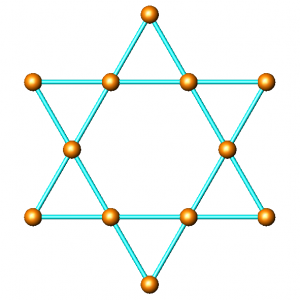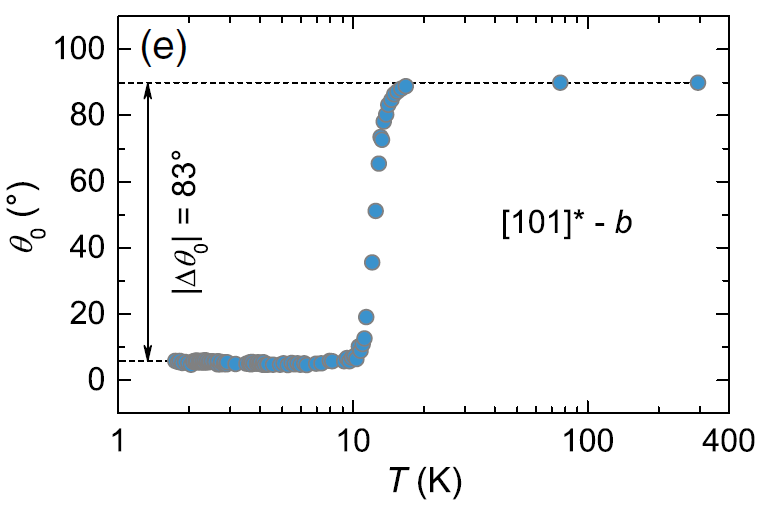This website uses cookies to ensure a better user experience.
To get more information, please read our Cookie Statement.
Symmetry Reduction in a Quantum Kagome Antiferromagnet
Together with her colleagues from Slovenia, France and USA, our Mirta Herak recently published a paper in Physical Review Letters about symmetry reduction in herbertsmithite. The titular crystal is the closest natural realization of the quantum kagome antiferromagnet. For the first time its magnetic properties reveal a broken symmetry at low temperatures.
Symmetry Reduction in the Quantum Kagome Antiferromagnet Herbertsmithite
A. Zorko, M. Herak, M. Gomilšek, J. van Tol, M. Velázquez, P. Khuntia, F. Bert, P. Mendels
Physical Review Letters 118, 017202 (2017). doi: 10.1103/PhysRevLett.118.017202
In a herbertsmithite crystal, ZnCu3(OH)6Cl2, the spins of unpaired copper electrons form a lattice which closely matches that of a quantum kagome antiferromagnet. Spins in a quantum kagome antiferromagnet may remain disordered down to the lowest temperatures thanks to their frustrated interactions in a so-called quantum spin liquid state. Energetically close to this state is the valence bond solid which requires the translational symmetry to be broken, as opposed to the symmetry of the quantum spin liquid which remains unchanged at all temperatures.

Kagome atomic lattices were named after traditional Japanese baskets with a characteristic hexagon-and-triangle weave pattern.
Real materials always contain defects. In the case of frustrated spin lattices these may cause the ground state to prefer the valence bond solid instead of quantum spin liquid. In herbertsmithite, defects are intrinsically present as Cu atoms from the kagome planes take the place of Zn atoms, which otherwise sit between the planes. However, the ground state of herbertsmithite is ultimately decided by whether Zn atoms take the place of Cu atoms inside the kagome planes. In this paper, magnetic torque measurements are shown which prove herbertsmithite undergoes a reduction of symmetry as the temperature is lowered. Further, ESR measurements indicate there are two kinds of defects present, one apparently isolated from the kagome spins. Both kinds of defects feel the global symmetry reduction at low temperatures. These experiments open a key avenue for future studies of the role of defects and their interaction with intrinsic kagome physics in herbertsmithite.

The phase of the magnetic torque changes with temperature by an angle different from 90°, which reveals broken symmetry at low temperatures.




